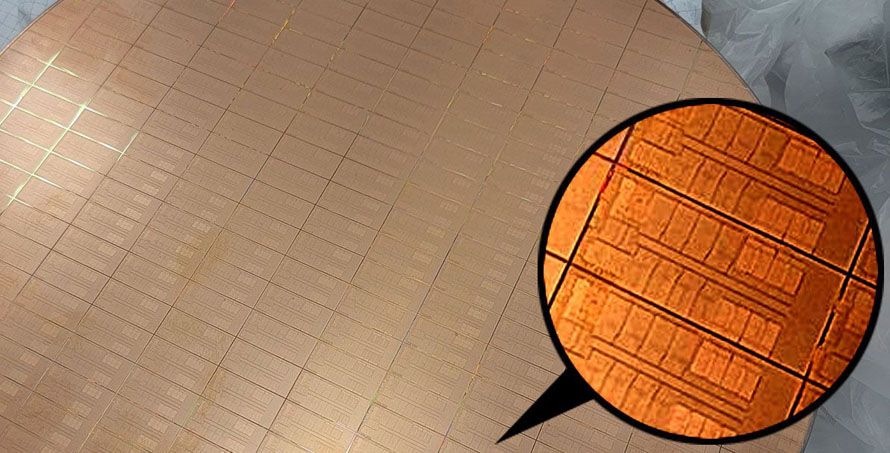
Core i9-13900K Early Review Shows Big Gains Over Core i9-12900K
Raptor Lake appears to provide a generational speed boost purely from optimizations alone.
Thanks to an early Intel Core i9-13900K retail review on Bilibili, we get an early look at Raptor Lake’s architectural enhancements and performance improvements over Intel’s 12th Gen Alder Lake architecture on finalized CPU silicon. Be warned that this review is super early, released far earlier than the October 20 official launch. So take all this info with a grain of salt.
The review shows us that Intel’s design philosophy going into Raptor Lake was to improve both its frequency headroom and its multi-threaded performance – by doubling the E cores and improving the architecture’s L2 and L3 cache performance.
But starting with core frequencies first, the Core i9-13900K sees a massive clock speed improvement over its predecessor, the Core i9-12900K, featuring a 5.8 GHz peak boost on cores 1 and 2, while cores 3-8 see a peak turbo boost clock of 5.5 GHz. Likewise, the E cores saw a stellar improvement, going from 3.7 GHz on the Core i9-12900K to 4.3 GHz on the Core i9-13900K – despite core counts doubling from 8 to 16 simultaneously.
According to the reviewer, Intel has also optimized the ring bus to help improve access delays between the cores. In Intel’s Alder Lake design, the ring bus would drop 3600 MHz when the E cores were primarily active over the P cores. However, with the Core i9-13900K, the ring bus now operates at more than 4600 MHz. This small but essential change vastly improves core-to-core communication latency to around 30-33 ns across all 24 cores, excluding exceptions. Alder Lake’s core latency results show roughly 30-33 ns for eight cores and 35-40ns for the rest.
Raptor Lake Cache Improvements
Overall, the Core i9-13900K sees a 5-11% latency improvement in the L1, L2, and L3 caches compared to the Core i9-12900K on the P cores. In contrast, the E cores see a much more significant 16-18% improvement in benchmarks tested.
On top of this, thanks to Raptor Lake’s bigger L2 and L3 cache sizes, latency also improves for a longer duration, as each test can stay in the L2 or L3 cache for longer since cache sizes have increased. Raptor Lake accomplishes this boost in latency with two methods, the first is due to Raptor Lake’s frequency improvements to the cores, and second, the cache performance largely remains the same when taking frequency out of the equation.
It is good because higher cache capacity usually directly impacts cache latency. But with Raptor Lake, we are not seeing this behavior as suitable for performance. The only exception to the latency improvements is with the L3 cache, where we know a bit of extra latency at the edges of the L3 test. However, the E cores are fair, just as good, and even better where the L3 cache is concerned, and they see a latency reduction compared to Alder Lake.
Bandwidth has also improved a lot, but it depends on the workload. For example, read performance increases with the L1 cache by 12.5% in single-threaded testing on the P cores. Everywhere else, however, performance is the same between both architectures – including the E cores. But, in multi-threaded workloads, cache bandwidth is vastly improved from 11% to 44%. According to the reviewer, it is due to monstrous pure L3 cache bandwidth improvements, from higher association up to 12 way vs. 10 way.
Raptor Lake Performance
In Cinebench R15, R20, and R23, the Core i9-13900K gained a 12.5% average performance improvement over the Core i9-12900KF with the P cores only in the single-threaded test. However, in testing with the E-cores, the Core i9-13900K sees a 16% single-threaded improvement in performance over the Core i9-12900K’s E cores, but the same 12% in the other Cinebench versions.
Multi-threaded results showed even more outstanding results, with a 48% average performance improvement for the Raptor Lake part in all three Cinebench versions. Additionally, in all other tests the review conducted, including 7z decompression, compression, cryptography, 3DMark, and more, the Core i9-13900K was, on average, 41% faster than the Core i9-12900KF.
The reviewer also tested pure IPC results with a locked 3.6 GHz frequency. For the P cores, they netted a 12% IPC improvement for the Core i9-13900K over the Core i9-12900KF and a 6% improvement for the E cores.
Gaming tests were also conducted in several games, including Ashes of the Singularity, CSGO, and more. Overall, the Core i9-13900K netted a 10%+ improvement over the Core i9-12900KF.
If this reviewer’s data is accurate, Raptor Lake is a significant upgrade over Alder Lake in almost every way. It provides a generational leap in performance in most areas without moving to a newer Intel node. These improvements can be attributed to the L2 and L3 cache density, latency, bandwidth improvements, and the added frequency headroom. Not to mention adding 2x more E cores compared to Alder Lake.
However, we have to stress that these are very, very early results for Raptor Lake, they may very well be accurate, but we have to take them with a grain of salt for now until we see more 3rd party reviews come out around Raptor Lake’s launch date of October 20.